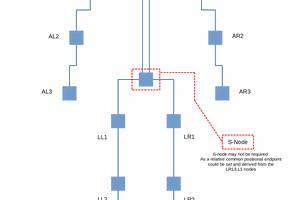Project Title: Exploring Single Layer Capacitors (SLCs) as Next-Generation Antennas
Project Summary:
This project investigated the potential of single layer capacitors (SLCs) as antennas for wireless communication. Traditional antennas can be bulky and limit device miniaturization and efficiency.
Methodology:
- Theoretical modeling and simulations: We used theoretical models and simulations to predict the electromagnetic field characteristics generated by SLCs.
- Comparison with traditional antennas: We compared the simulated performance of SLC antennas to traditional antennas in terms of size, efficiency, and frequency range.
- Experimental validation: We conducted an experiment to confirm the ability of SLCs to generate electromagnetic fields for wireless communication.
- Integration and proof of concept: We successfully integrated an SLC antenna with a wireless chip and achieved data transmission, demonstrating the practical feasibility of this technology.
Key Findings:
- Simulations suggest that SLCs have the potential to be:
- Smaller: Enabling more compact and miniaturized wireless devices.
- More efficient: Potentially improving battery life and signal strength.
- Wider frequency range: Offering greater flexibility for diverse applications.
- The experiment successfully validated the generation of electromagnetic fields by SLCs.
- Integration with a wireless chip demonstrated the feasibility of using SLCs for data transmission.
Potential Impact:
This research paves the way for the development of next-generation wireless communication devices with:
- Reduced size and weight: Enabling the creation of smaller and more portable devices.
- Improved efficiency: Leading to longer battery life and lower power consumption.
- Greater versatility: Applicable across various sectors like telecommunications, consumer electronics, and healthcare.
Future Work:
- Further research is needed to optimize the design and performance of SLC antennas.
- Exploring integration with different wireless communication protocols and devices.
- Investigating the commercial feasibility and scalability of this technology.
This project holds significant promise for transforming the landscape of wireless communication by offering a novel and potentially superior alternative to traditional antennas.
 alex gachahi
alex gachahi

 haydn jones
haydn jones
 Lobeware
Lobeware

 Gabriel do Vale Rios
Gabriel do Vale Rios
am exited to hear your thoughts on this new technology